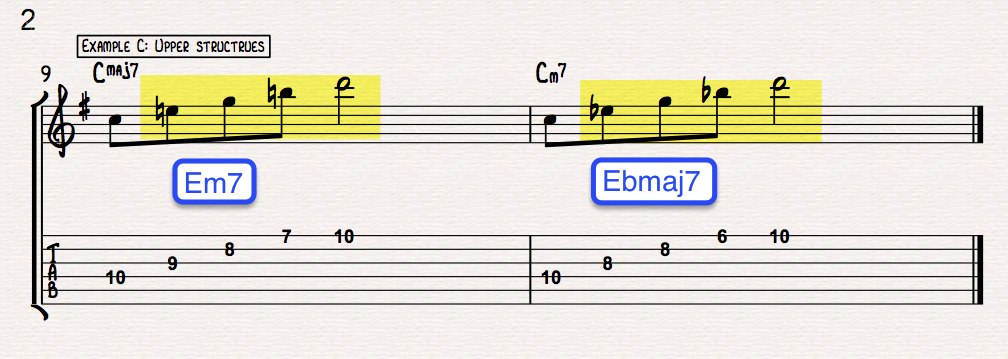Major to Minor Jazz Guitar Lick
Mar 21, 2018Voice Leading Within the Lines
Our aim is to give you ideas as well as some tools to help you develop them further. You’ll get them under your fingers without needing to get too intellectual about the process. Of course, there is some thinking involved, but we’ll try to make it easy for you.
Here, we will be going over a major to minor jazz guitar lick and then giving you more examples with the same concept.
Join our Community here.
Lick Example
Today’s material comes from our “Tune of The Month Club” from October 2016. The song is the popular jazz standard “Just Friends”. The line we’re working with fits into measures 1-4 of the song, and features a subtle but very useful concept.

How It Works
The concept that stands out with this idea is how the line navigates the change between the CMaj7 chord and the Cm7 that follows it. The line follows a very similar contour over both chords, and yet it is modified ever so slightly to ensure we make it fit the change between them. In addition, the line uses a chord extension as well, which is an important element to jazz language!
More Examples
Now let’s take the idea and manipulate it to create even more ideas.
Example A
Here’s our first new idea:

Here, we’ve gone straight to the heart of our concept. By stripping away a lot of the ornamental notes, we’re left with a simple outline of a Cmaj7 chord, then a Cm7 chord. The Cm7 has the 9th added as well.
Example B
And now our second idea ...

This, in fact, is even more direct than Example A. To outline the differences between Cmaj7 and Cm7, we simply play the root-position arpeggios of both.
Example C
For our third idea, here is something a little more adventurous!

It’s here you can see that by overlapping certain arpeggios, we create a structure that allows us to reach for new notes. Over the Cmaj7, an Em7 arpeggio gives us the 9th of the chord. Then, over the Cm7 chord, a EbMaj7 structure gives us the 9th of the Cm7 chord as well!
Becoming comfortable with these ideas will lead you to exciting new sounds!
Jump In
Now we’re ready for the fun part -- playing! I call this part “winging it”, as we sit down and just play. Don’t worry about any of the stuff we’ve just discussed, you’ll learn it over time. By far, the most important thing to do is to jump into the music and play!
Join our Community here.










